Compact digital camera group test
-
-
Written by Gordon Laing
Quality
Resolution is without a doubt the number one specification for digital cameras. The models tested here feature 6 to 8 Megapixels which is sufficient to make great-looking 10x8in prints. Indeed if you mostly print at smaller sizes, these resolutions could even be considered excessive.
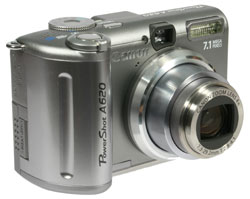
That said, higher resolutions give you the flexibility of either cropping into a small area and still having enough detail remaining for a good print, or of course to make a much larger print in the first place. It’s also a fact of digital camera marketing that resolutions will continue to increase and many people will be influenced by this figure more than anything else.
So in ascending order, the Pentax S6 has 6 megapixels, the Fujifilm F11 has 6.3 Megapixels, the Canon A620 has 7.1 Megapixels, and the Sony N1 a considerable 8.1 Megapixels. In terms of actual image sizes, the Pentax, Fujifilm, Canon and Sony cameras deliver images with 2816×2112, 2848×2136, 3072×2304 and 3264×2448 pixels respectively.
The Sony clearly has the highest number, but it’s important to remember photographic quality prints typically use 300 pixels per inch. So the 8.1 Megapixel Sony images, being only 448 pixels wider and 336 pixels taller than those of the mere 6 Megapixel Pentax S6, really only let you enlarge by an extra inch or so before losing quality.
So while the Sony N1 genuinely has the highest resolution of the group, there’s not much between the four cameras in practice. Ultimately, all four record sufficient detail to make good looking 10x8in prints, and that’s more than most people will ever need. Check our Results page for actual technical comparisons of the resolutions in practice.
Camera file size comparison
All digital cameras allow you to reduce their resolution or increase the JPEG compression in order to squeeze more photos onto their memory cards, but both are done at the cost of picture quality. We strongly believe if you’ve carefully chosen a new digital camera, you should really be trying to get the best from it, so recommend only using the best quality settings. This means selecting the highest resolution and the least JPEG compression.
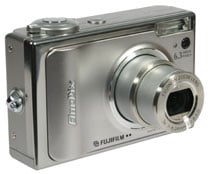
Since the image file size dictates how many pictures you’ll fit onto a card, we measured the average size of photos taken using each camera with its best quality settings – this allows you to estimate how many photos you’ll squeeze onto a certain sized memory card. Remember though, these are average figures, as the size also varies depending on the complexity of the image.
The Pentax Optio S6 produced the smallest average image size of 1.8MB, followed by the Canon A620 and Fujifilm F11 at 3MB each and the Sony N1 at 3.4MB. This means given the same size memory card, the Pentax S6 will squeeze over one and a half times as many images as the Canon and Fujifilm, and almost twice as many as the Sony. It does however mean the S6 is also applying more compression than the others, so check out our Results and Gallery pages to see if this has become detrimental to overall image quality.
Camera movie mode comparison
Digital cameras have long featured movie modes, but over the years they’ve matured from short bursts of poor quality video, to longer clips of surprisingly decent-looking footage. Lets get one thing straight now though: even the best movie modes are still no match for the quality of a dedicated camcorder, especially in terms of sound. But the feature is still well worth having and it’s reassuring to see how much better today’s cameras are getting at it.
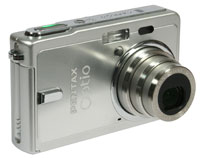
All four models can record video at 640×480 pixels and a smooth 30 frames per second, which in terms of numbers, is close to actual standard TV broadcasts. Exposure, audio capture and compression techniques force the quality to be lower than most TV shows, but it’s still impressive.
In terms of quality, all four were roughly similar, although it’s revealing to compare actual file sizes. We filmed roughly the same 15 second clip with each camera using its best quality 640 / 30fps mode and found file sizes were up to six times different sizes.
The Canon A620 consumed a considerable 28MB for 15 seconds of video, compared to 20MB by the Sony N1, 18MB by the Fujifilm F11 and a remarkably tiny 4.77MB for the Pentax S6. The S6’s secret is again compression, but rather than turn it up and lose quality, Pentax has cleverly employed the more efficient ‘Divx’ compression system. This manages to match quality with much smaller file sizes, and here it really proves its worth.
It’s also worth noting all the cameras locked their optical zooms while filming, although the Canon A620 offered a digital zoom facility during the recording.
Camera creative control comparison
All but the most basic cameras feature some degree of creative control beyond fully automatic modes, and the four models on test were no different. The most popular creative options for compact cameras remain scene preset modes, which automatically configure the camera’s settings for certain common situations, such as portraits, landscapes, sports and night shots. Then there’s the traditional photographic modes which allow you to manually adjust the lens aperture and shutter speed yourself.
Canon’s PowerShot A620 has the greatest manual photographic control of the four, matching the exposure modes of considerably more sophisticated cameras. Its main mode dial offers Program, Manual, Shutter and Aperture Priority modes which will delight photographic enthusiasts who want complete control.
Beginners are also well-catered for though with the dial offering direct access to three scene presets, along with a fourth special scene option which allows you to choose from a further eight presets using the screen. There’s also a stitch-assist mode to aid panoramic photography along with ‘My Colours’, a novelty mode which can selectively change specific colours in an image. You can additionally choose a vivid colour option, along with sepia or black and white modes.
Switching the main mode dial to SP on Fujifilm’s FinePix F11 allows you to choose from five scene presets using an on-screen menu. Turning the dial to A / S / M switches the camera to Manual, Aperture or Shutter Priority mode, depending on which has been pre-selected on a menu. Pressing the ‘F’ button on the rear of the camera also allows you to select a more vivid colour mode or a black and white option.
The creative options of Pentax’s Optio S can be viewed by pressing the Mode button on the rear. This displays a choice of 15 options on-screen including panorama assist and the movie mode, although sadly no traditional photographic modes like Aperture or Shutter Priority; note the tests which required specific apertures were achieved by varying the distance of our studio lamps.
Delve into the S6’s menus though and you’ll find three sliders to adjust sharpness, saturation and contrast. There’s also a selection of digital filters to choose from including sepia and no fewer than four black and white options, three of which simulate the use of red, green and blue filters.
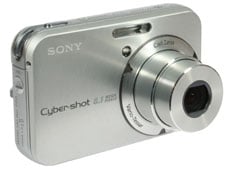
Sony’s Cyber-shot DSC-N1 offers eight scene presets and the choice of Auto, Program or fully Manual mode. The latter only offers three aperture settings, and you must also remember to manually balance the shutter speed for a correct exposure – luckily the camera tells you how much under or over you are at any time though. Switch out of fully Auto mode and the N1 lets you adjust the Saturation, Contrast and Sharpness settings, along with choosing a sepia or black and white option.
The N1 also has a neat feature where low resolution copies of all the photos you’ve taken can be stored in the camera’s internal memory, even if you remove or erase the card. There’s enough room for 500 images in this album, and you can delete any you don’t want. It’s a great feature which allows you to effectively carry an album of your favourite shots and share them with friends on-screen or using a TV slideshow.
Speaking of which, Sony even lets you transfer a handful of MP3 music tracks onto the N1, so slideshows can be accompanied by your favourite tunes. A novelty perhaps, but a fun idea none-the-less.
Camera startup time comparison
A couple of seconds doesn’t sound like much, but in photographic terms it could mean the difference between capturing a great shot, or missing it completely. Cameras which start and respond slowly can prove extremely frustrating, so we timed how long it took for each to wake up and be ready for action.
Slowest of the group was the Pentax S6, which gave the impression of speed by popping its lens out quickly, but then paused for a fraction before letting you take any photos; you’re looking at around 2.5 seconds between pressing On and taking a photo. Sony’s N1 was much nippier, taking 1.8 seconds to startup. Next was Fujifilm’s F11, taking 1.5 seconds. The Canon A620 was quickest of all though, ready for action in 1.3 seconds.
Note all four cameras extended their lenses during power-up: the Canon, Fujifilm, Pentax and Sony lenses slide out to 23, 26, 20 and 23mm respectively. All but the Canon could fold their lenses in to become flush to the surface of their bodies; this isn’t an issue on the Canon though as it’s grip was much bigger than the actual protruding lens housing.
ISO Results
Canon PowerShot A620 | Fujifilm FinePix F11 | Pentax Optio S6 | Sony Cybershot DSC-N1 | |||
 |  |  |  | |||
1/200, f4, 50 ISO | 1/400, f3.7, 80 ISO | 1/160, f3.6, 64 ISO | 1/160, f5.6, 64 ISO | |||
 |  |  | 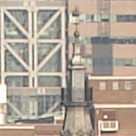 | |||
1/200, f4, 50 ISO | 1/400, f3.7, 80 ISO | 1/160, f3.6, 64 ISO | 1/160, f5.6, 64 ISO | |||
 |  |  | 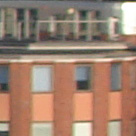 | |||
1/200, f4, 50 ISO | 1/400, f3.7, 80 ISO | 1/160, f3.6, 64 ISO | 1/160, f5.6, 64 ISO |
Resolution Results
Canon PowerShot A620 | Fujifilm FinePix F11 |
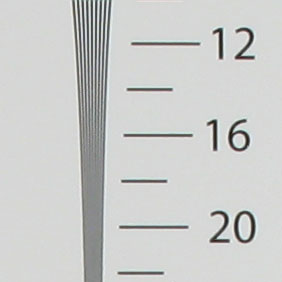 | 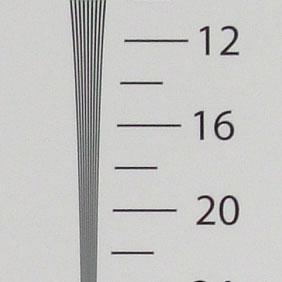 |
1600 lpph, 7.3-29.2mm at 13mm, f8, 1/25, 50 ISO | 1650 lpph, 8-24mm at 18mm, f8, 1/34, 80 ISO |
Pentax Optio S6 | Sony Cybershot DSC-N1 |
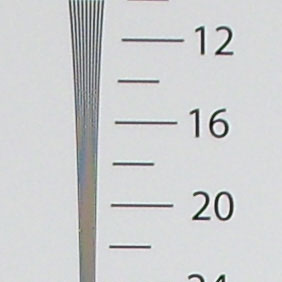 | 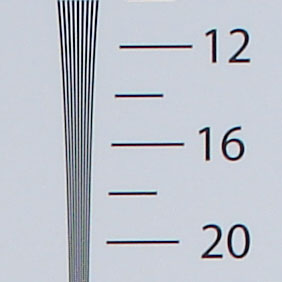 |
1400 lpph, 6.2-18.6mm at 13mm, f6.5, 1/160, 64 ISO | 1900 lpph, 7.9-23.7mm at 16mm, f11, 1/13, 64 ISO |
Canon PowerShot A620 | Fujifilm FinePix F11 |
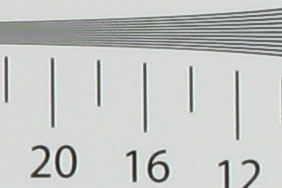 | 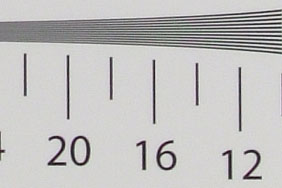 |
1700 lpph, 7.3-29.2mm at 13mm, f8, 1/25, 50 ISO | 1800 lpph, 8-24mm at 18mm, f8, 1/34, 80 ISO |
Pentax Optio S6 | Sony Cybershot DSC-N1 |
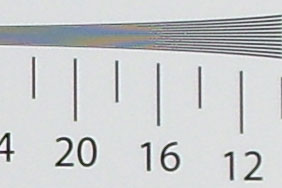 | 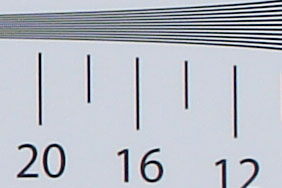 |
1500 lpph, 6.2-18.6mm at 13mm, f6.5, 1/160, 64 ISO | 1900 lpph, 7.9-23.7mm at 16mm, f11, 1/13, 64 ISO |
Canon PowerShot A620 | Fujifilm FinePix F11 | Pentax Optio S6 | Sony Cybershot DSC-N1 | |||
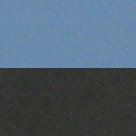 |  | 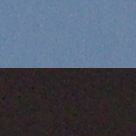 | 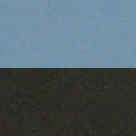 | |||
50 ISO | 80 ISO | 64 ISO | 64 ISO | |||
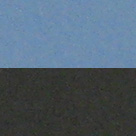 | 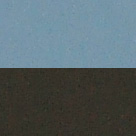 | 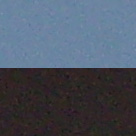 | 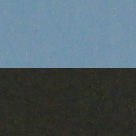 | |||
100 ISO | 100 ISO | 100 ISO | 100 ISO | |||
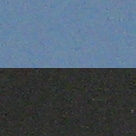 | 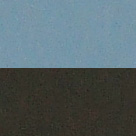 | 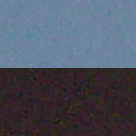 | 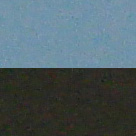 | |||
200 ISO | 200 ISO | 200 ISO | 200 ISO | |||
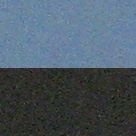 | 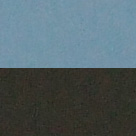 | 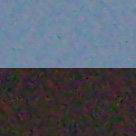 | 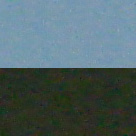 | |||
400 ISO | 400 ISO | 400 ISO | 400 ISO | |||
 | 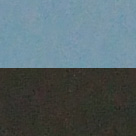 |  | 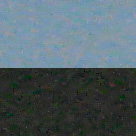 | |||
800 ISO not available | 800 ISO | 800 ISO not available | 800 ISO | |||
 | 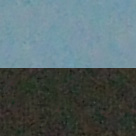 |  |  | |||
1600 ISO not available | 1600 ISO | 1600 ISO not available | 1600 ISO not available |
Canon PowerShot A620 | Fujifilm FinePix F11 | Pentax Optio S6 | Sony Cybershot DSC-N1 | |||
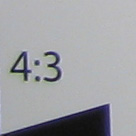 | 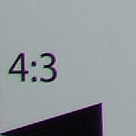 | 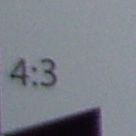 | 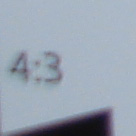 | |||
35-140mm at 35mm f2.8 | 36-108mm at 36mm f2.8 | 37-112mm at 37mm f2.7 | 38-114mm at 38mm f2.8 | |||
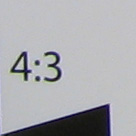 | 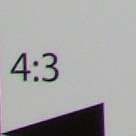 | 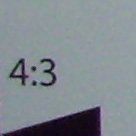 | 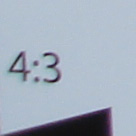 | |||
35-140mm at 35mm f5.6 | 36-108mm at 36mm f5.7 | 37-112mm at 37mm f4.3 | 38-114mm at 38mm f4 | |||
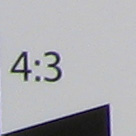 |  |  | 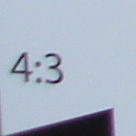 | |||
35-140mm at 35mm f8 | 36-108mm at 36mm f8 | Only two aperture settings available | 38-114mm at 38mm f8 | |||
Canon PowerShot A620 | Fujifilm FinePix F11 | Pentax Optio S6 | Sony Cybershot DSC-N1 | |||
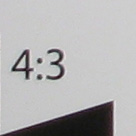 | 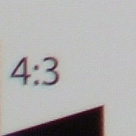 | 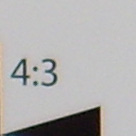 | 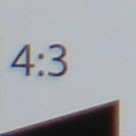 | |||
35-140mm at 140mm f4.1 | 36-108mm at 108mm f4.9 | 37-112mm at 112mm f5.2 | 38-114mm at 114mm f5.4 | |||
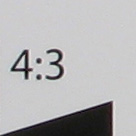 | 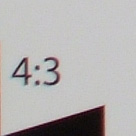 | 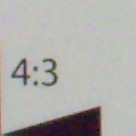 | 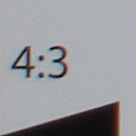 | |||
35-140mm at 140mm f5.6 | 36-108mm at 108mm f5.6 | 37-112mm at 112mm f8.3 | 38-114mm at 114mm f8 | |||
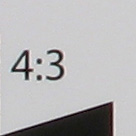 | 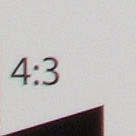 |  | 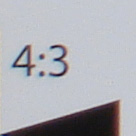 | |||
35-140mm at 140mm f8 | 36-108mm at 108mm f8 | Only two aperture settings available | 38-114mm at 114mm f16 |
Canon PowerShot A620 | Fujifilm FinePix F11 | Pentax Optio S6 | Sony Cybershot DSC-N1 | |||
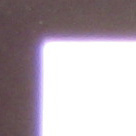 | 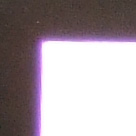 | 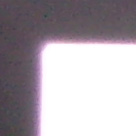 | 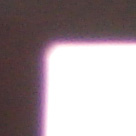 | |||
35-140mm at 35mm f2.8 | 36-108mm at 36mm f2.8 | 37-112mm at 37mm f2.7 | 38-114mm at 38mm f2.8 | |||
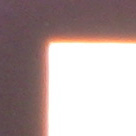 | 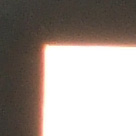 | 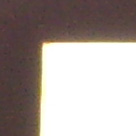 | 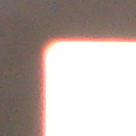 | |||
35-140mm at 140mm f4.1 | 36-108mm at 108mm f4.9 | 37-112mm at 112mm f5.2 | 38-114mm at 114mm f5.4 |
Macro Results
| To measure macro performance we photographed a custom chart using the bundled lenses at a distance and focal length which delivered the maximum possible reproduction. The dark lines are 10mm apart.Here the Fujifilm and Sony models performed averagely, while the Pentax, unable to focus closer than 15cm, produced a below average result. The clear winner here is the Canon A620, which can focus as close as 1cm away from its subject, offering amazing potential for macro-photography. |
Canon PowerShot A620 | Fujifilm FinePix F11 | Pentax Optio S6 | Sony Cybershot DSC-N1 | |||
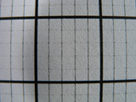 | 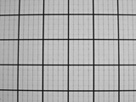 | 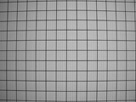 | 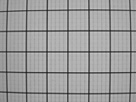 | |||
35-140mm at 35mm Max area of 22x16mm | 36-108mm at 36mm Max area of 56x40mm | 37-112mm at 37mm Max area of 138x102mm | 38-114mm at 38mm Max area of 66x44mm |
Canon PowerShot A620 | Fujifilm FinePix F11 | Pentax Optio S6 | Sony Cybershot DSC-N1 | |||
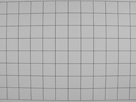 | 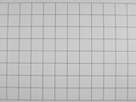 | 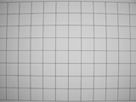 | 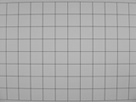 | |||
35-140mm at 35mm Distortion: 2.7% barrel | 36-108mm at 36mm Distortion: 1.53% barrel | 37-112mm at 37mm Distortion: 2.7% barrel | 38-114mm at 38mm Distortion: 2.89% barrel |
Geometry Results
| To measure geometric distortion we photographed a custom test chart consisting of a grid pattern with perfectly straight lines. Here are the results for the cameras at their longest focal lengths. The images were analysed with Imatest using 5th Order line calculation and the full areas presented here at a reduced resolution.Zoomed-in to telephoto, the Canon and Sony models again exhibited average distortion, although the Pentax S6 was measurably worse in this respect. Once again though, the Fujifilm F11 took the lead. |
Canon PowerShot A620 | Fujifilm FinePix F11 | Pentax Optio S6 | Sony Cybershot DSC-N1 | |||
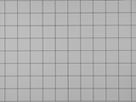 | 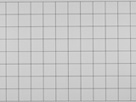 | 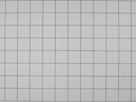 | 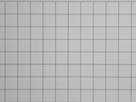 | |||
35-140mm at 140mm Distortion: 0.271% pincushion | 36-108mm at 108mm Distortion: 0.176% barrel | 37-112mm at 112mm Distortion: 0.985% barrel | 38-114mm at 114mm Distortion: 0.255% pincushion |
To measure geometric distortion we photographed a custom test chart consisting of a grid pattern with perfectly straight lines. Here are the results for the cameras at their widest focal lengths. The images were analysed with Imatest using 5th Order line calculation and the full areas presented here at a reduced resolution.
The Canon, Pentax and Sony cameras performed roughly the same, exhibiting a typical degree of geometric distortion at wide angle. The Fujifilm F11 boasted an above average result here.
Canon PowerShot A620 | Fujifilm FinePix F11 | Pentax Optio S6 | Sony Cybershot DSC-N1 | |||
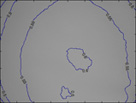 | 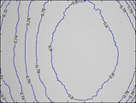 | 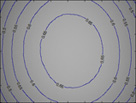 | 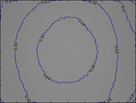 | |||
35-140mm at 35mm f2.8 Mean corner fall-off: 74.5% | 36-108mm at 36mm f2.8 Mean corner fall-off: 85.7% | 37-112mm at 37mm f2.7 Mean corner fall-off: 63.6% | 38-114mm at 38mm f2.8 Mean corner fall-off: 87% |
Vignetting Results
| To measure lens vignetting and light fall-off we photographed a white target with a highly diffused custom filter. Here are the results for the cameras at their longest focal lengths with the apertures wide open and the focus manually set to infinity. The images were analysed with Imatest and the full areas presented here at a reduced resolution. Bigger percentages are better.Zoomed-in to telephoto, the results were much closer, and also much improved for the Pentax S6. The Fujifilm F11 edged ahead once more, leaving the Canon A620 coming last, albeit not by a large margin. |
Canon PowerShot A620 | Fujifilm FinePix F11 | Pentax Optio S6 | Sony Cybershot DSC-N1 | |||
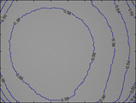 | 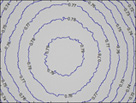 | 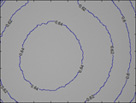 | 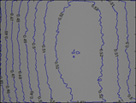 | |||
35-140mm at 140mm f4.1 Mean corner fall-off: 82.9% | 36-108mm at 108mm f4.9 Mean corner fall-off: 90.5% | 37-112mm at 112mm f5.2 Mean corner fall-off: 87.7% | 38-114mm at 114mm f5.4 Mean corner fall-off: 89% |
To measure lens vignetting and light fall-off we photographed a white target with a highly diffused custom filter. Here are the results for the cameras at their widest focal lengths with the apertures wide open and the focus manually set to infinity. The images were analysed with Imatest and the full areas presented here at a reduced resolution. Bigger percentages are better.
The Fujifilm and Sony models performed best here with very little darkening in the corners of wide angle shots. The Canon A620 performed averagely in this respect, but again the Pentax S6 came last with noticeable darkening in its corners at wide angle.




